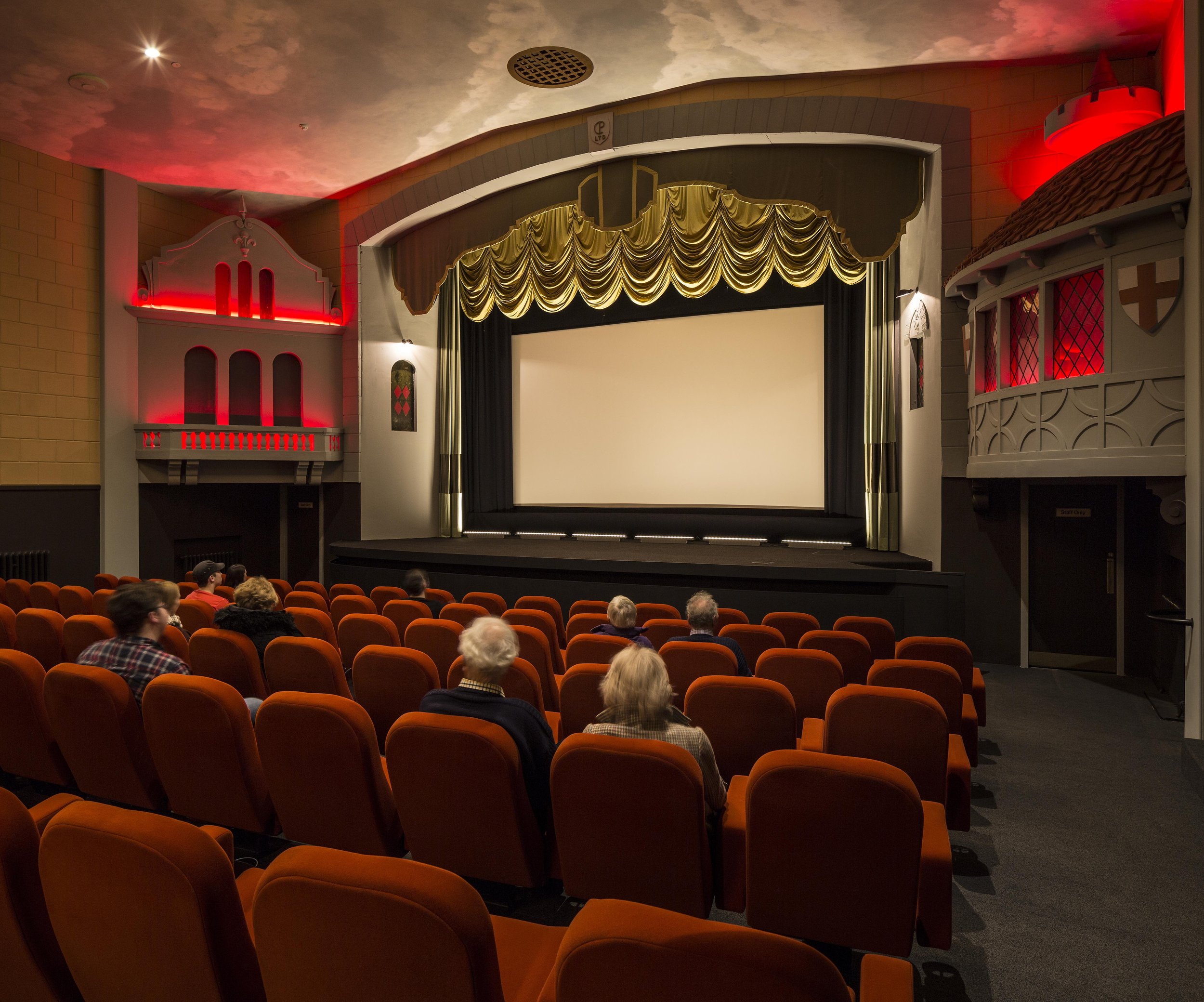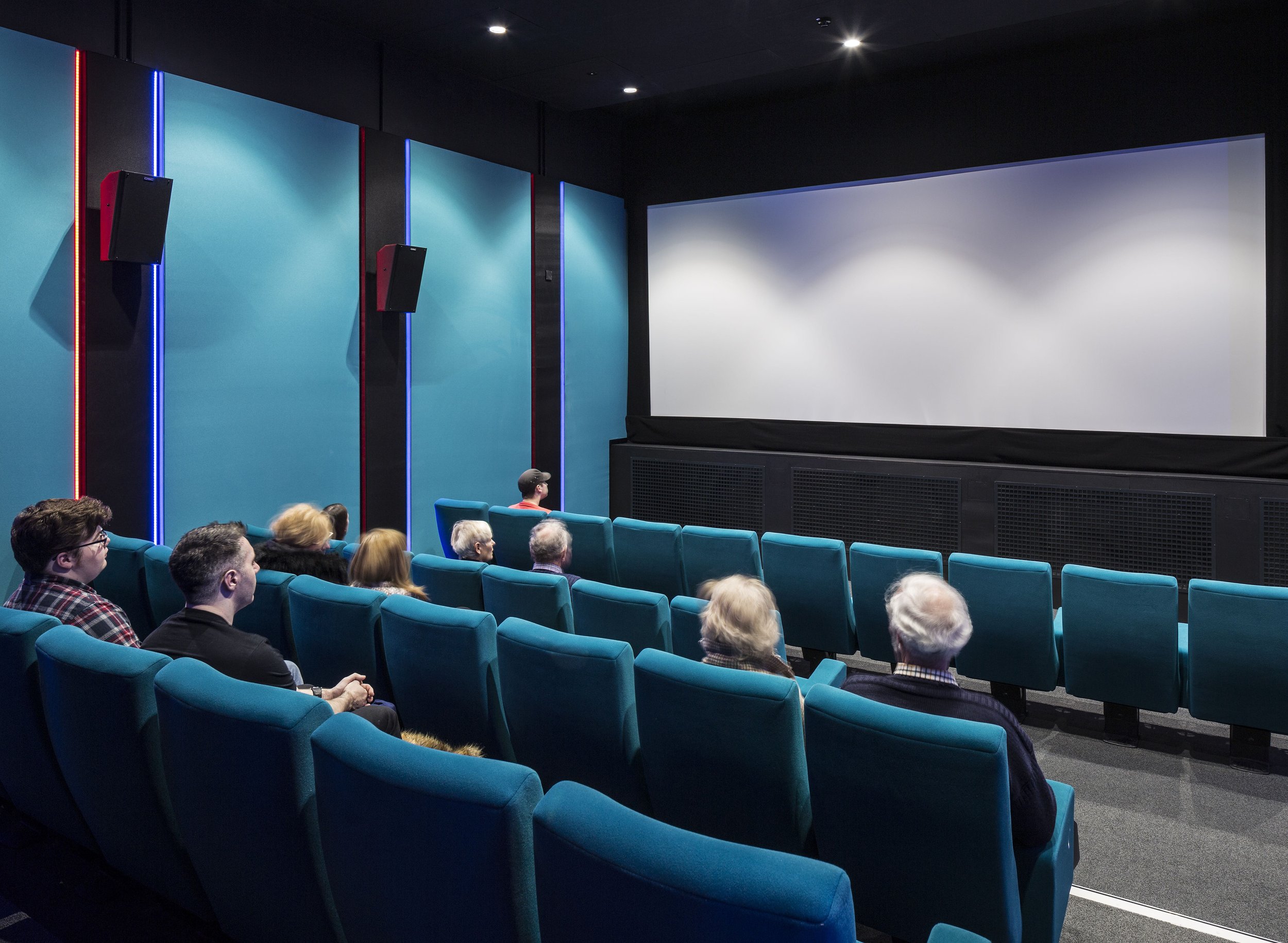CINEMA AND MEDIA
CAMPBELTOWN PICTURE HOUSE
CLIENT: CAMPBELTOWN PICTURE HOUSE
LISTED CATEGORY A
The Picture House is an important and rare example of an early purpose-built cinema and it is included in the Statutory List as a Category A building in recognition of its high architectural and historical significance. The Centenary Project was launched to conserve and upgrade it to meet the expectations of a modern cinema operator and cinema-going audience, and provide it with a sustainable future.
Campbeltown Picture House has the joint accolade of being one of Europe’s few surviving atmospheric cinemas and one of Scotland’s oldest cinemas still in operation. Designed by Albert V. Gardner, one of the most celebrated cinema designers in the first half of the 20th century, the Picture House opened in 1913.
Twenty years later, Gardner modernised the interior in the “atmospheric” style. Popular from the late 1920s, atmospheric cinemas transported audiences to exotic places such as European courtyards or gardens. Few now survive, with Campbeltown Picture House being the only extant example in Scotland and one of only a handful in Europe.
Gardner embellished the cinema with a blue sky and cloud effect on the ceiling and two plasterwork buildings (known locally as the “wee houses”) on either side of the screen that gave the ambiance of a courtyard. These special features have been meticulously restored with other elements of the original design such as the stunning art deco lights recreated by contemporary craftspeople. The 1930s decoration scene was restored using historic paint analysis.
“To see this much-loved Picture House as magnificent as it was the day it opened over 100 years ago is a delight. With the help of National Lottery funding, history and 21st century design have come together to create an incredible cultural centre for the local community.”
A strong part of the remit for the restoration of the Picture House was to ensure that the facilities were accessible to everyone, and a lot of care was taken to ensure that the new layout made it welcoming to people with reduced mobility, people who use wheelchairs or parents with buggies. Challenging though it is to ensure a Listed historic building is accessible, the care that has been taken to ensure this is the case is impressive.
The creation of a new entrance way, to avoid the steps that formed part of the original entrance, allows easy access for all whilst ensuring the striking façade of the building remained unchanged. The layout of both screens means that there is plenty of room for wheelchairs of all sizes and several of them.
The vision was for the restored Picture House to be ‘more than a cinema’, providing a cultural, leisure, social and community hub for Campbeltown and Kintyre, and to continue a tradition of using the original variety stage for small-scale comedy acts and music performances.
The new second screen has been important in allowing a greater diversity of films, which in turn attracts a younger audience and those across a broader socio-economic background. The new café bar, with views across the harbour, and flexible education/ community room provides additional spaces for the local community to meet, both formally and informally.
“The revival of a little building like this jewel can do something really important to a town.”
The re-launch of the cinema marked the culmination of more than three decades of work and commitment by Campbeltown Community Business. BFF worked closely with them to develop a scheme that was affordable and would receive the support of a wide range of funders.
The enhanced cultural and leisure offer, together with other local regeneration projects, is helping to retain existing residents, attract new residents to work in emerging industries, and encourage visitors to Campbeltown.
The project was shortlisted by the RIBA Journal MacEwen Awards, which “recognise built projects that are of real and demonstrable benefit to society”.
The judges were "enchanted by both the look of this historic little seafront cinema and by what its reinvention, by a committed community business and a practice with long experience in cinema design, meant."




